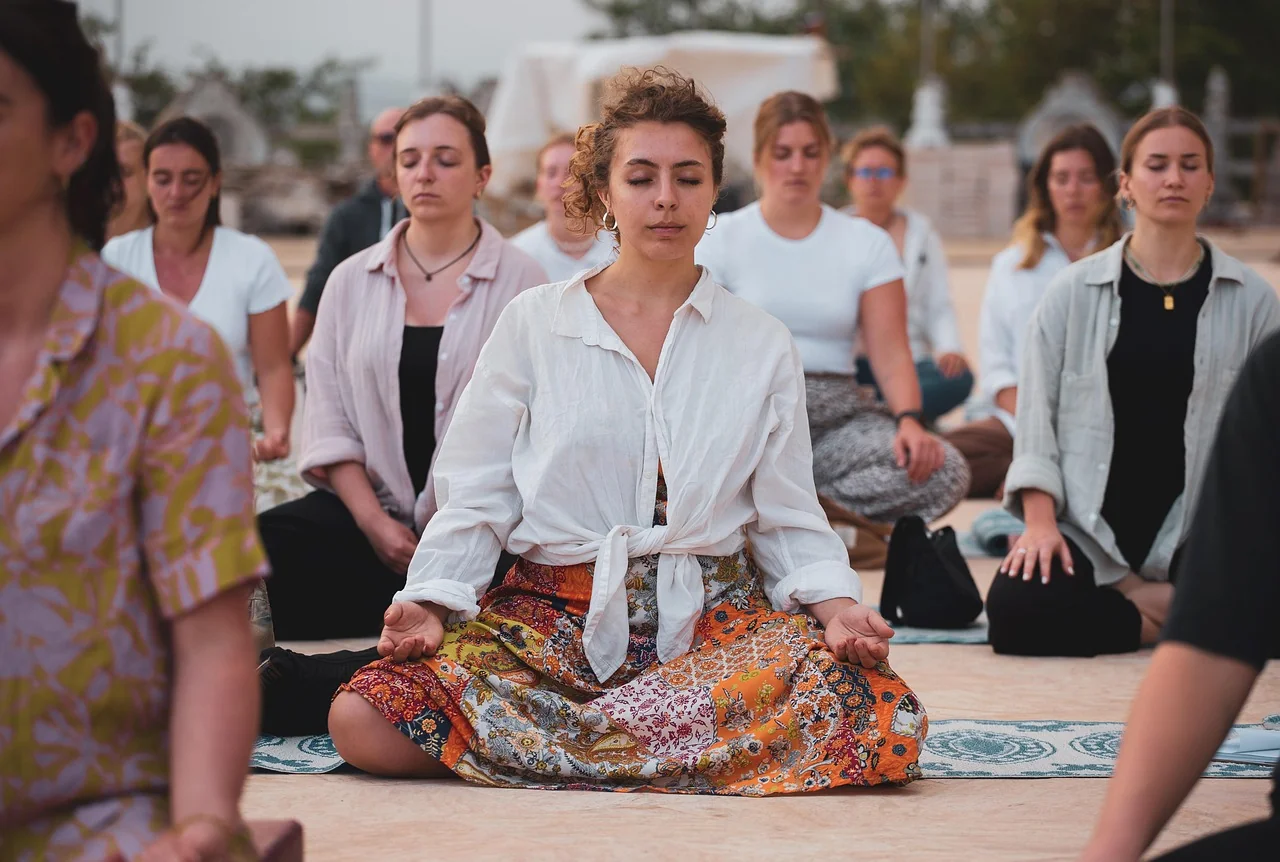Feeling overwhelmed by the constant chatter of anxiety or the heavy weight of depression? You're not alone, and the search for relief often leads to a powerful, evidence-based tool: meditation. If you're wondering exactly how to meditate for depression and anxiety, you’ve come to the right place. This isn't about achieving a state of eternal bliss or emptying your mind completely. Instead, it's a practical, learnable skill to help you manage the intrusive thoughts and emotional turbulence that characterize these conditions.
This guide is designed for absolute beginners. We'll break down the science of why meditation works to calm your nervous system and then provide clear, step-by-step techniques you can start practicing today. From a simple breathing meditation to a compassionate loving-kindness practice, you'll discover accessible ways to create a little space between you and your symptoms, fostering a sense of calm and control from within.
Understanding the Connection: How Meditation Helps Depression and Anxiety
Meditation isn't a magic cure, but it's a powerful tool that reshapes your relationship with your thoughts and feelings. The benefits are backed by science. When you practice meditation, you are essentially training your brain.
For anxiety, meditation helps calm the amygdala, the brain's alarm system. Regular practice can reduce its reactivity, making you less prone to the fight-or-flight response. For depression, meditation weakens the cycle of rumination—that loop of negative, repetitive thoughts. It strengthens the prefrontal cortex, the area linked to rational thought and focus, helping you observe sad or anxious thoughts without getting completely swept away by them. This creates a crucial pause between a triggering thought and your reaction.
Getting Started: Creating Your Meditation Space and Mindset
You don't need special equipment or hours of free time to begin. The key is consistency over duration. If you're completely new to the practice, our guide on how to meditate for beginners at home offers a perfect starting point.
- Find Your Space: Choose a quiet corner where you won't be interrupted. A comfortable chair or a cushion on the floor works perfectly.
- Set a Time: Start with just 5 to 10 minutes each day. Many people find mornings effective, but any consistent time works.
- Adopt the Right Mindset: Your mind will wander. This is not a sign of failure; it is the entire point of the practice. The act of noticing your mind has wandered and gently bringing it back is the repetition that builds mental strength. Be kind to yourself.
A Simple Breathing Meditation for Beginners
This foundational practice is your anchor. It can be done anywhere, anytime you feel overwhelmed.
- Sit Comfortably: Sit in a chair with your back straight and feet flat on the floor, or cross-legged on a cushion. Rest your hands on your knees.
- Close Your Eyes: Gently lower your eyelids to reduce visual distraction.
- Tune into Your Breath: Bring your full attention to the physical sensation of breathing. Notice the air moving in and out of your nostrils, or the rise and fall of your chest or belly. Don’t try to control it; just observe.
- Follow the Rhythm: Use the natural flow of your breath as a point of focus. You can mentally note "in" on the inhale and "out" on the exhale if it helps.
- Gently Guide Your Attention Back: Within moments, your mind will likely drift to a worry, a memory, or a plan. When you notice this, simply acknowledge it without judgment—"thinking," "wandering"—and softly return your focus to your next breath.
- Continue: Repeat this process for your entire practice, whether it's 5 minutes or 20. Each return is a rep for your brain.
Exploring Other Powerful Techniques
Once you're comfortable with breath awareness, you can explore other mindfulness techniques that target specific symptoms. For a deeper dive into different methods, you can explore the best way to learn how to meditate.
Body Scan for Grounding
This is excellent for anxiety, as it pulls you out of your head and into your body. Lie down or sit comfortably. Slowly bring your attention to each part of your body, starting from your toes and moving up to the top of your head. Notice any sensations—tingling, warmth, tension, or numbness—without trying to change them. This practice builds deep body awareness and can interrupt panic cycles.
Loving-Kindness for Self-Compassion
Loving-kindness meditation directly counters the harsh self-criticism common in depression. Silently repeat phrases of goodwill and kindness, first toward yourself ("May I be happy. May I be safe. May I be healthy."), and then gradually extend these wishes to others.
Integrating Mindfulness into Your Daily Life
The true power of mindfulness unfolds when you bring it off the cushion. This means paying purposeful attention to everyday activities.
- When you drink your morning coffee, fully experience the smell, warmth, and taste.
- While brushing your teeth, notice the sensation of the bristles and the taste of the toothpaste.
- When walking, feel your feet connecting with the ground.
These micro-practices train your brain to stay present, preventing it from automatically spiraling into anxious what-ifs or depressive what-was. By building this skill, you create a resilient and aware mind capable of navigating the challenges of depression and anxiety with greater balance and control. For more strategies, our article on proven ways to decrease stress and anxiety can be a great resource.
In closing, the journey of using meditation to manage depression and anxiety is one of gentle, consistent practice. The key takeaways are simple yet profound: begin with short, manageable sessions focused on the breath to anchor yourself in the present moment, and approach the inevitable wandering thoughts with an attitude of non-judgmental observation. This practice is not about emptying the mind, but about changing your relationship with your thoughts, learning to witness them without being swept away. By cultivating this skill, you build a resilient inner foundation, creating a space between a triggering event and your reaction. The main message remains that this is a tool for empowerment, offering a way to reclaim a sense of calm and control. Start with just five minutes today, and trust that each small moment of mindful awareness is a significant step toward greater peace. Be patient and compassionate with yourself; this path leads to a quieter mind and a lighter heart.


